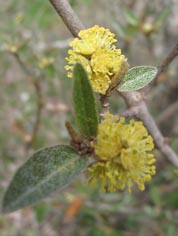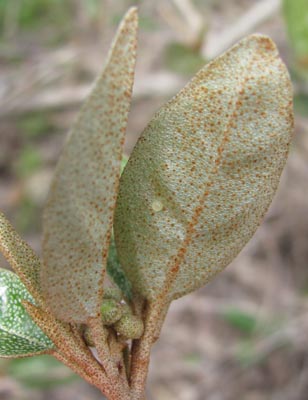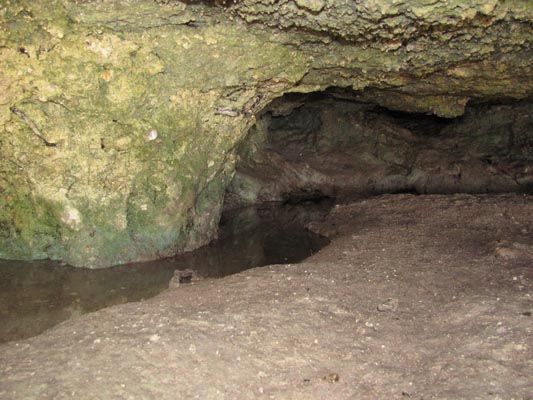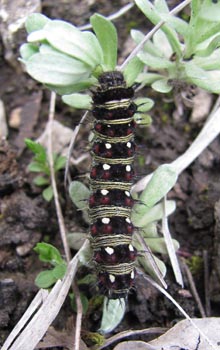
I'm now entering the most fun time of year--the beginning of our field season. While I will still have office duties to accomplish, and so many unfinished reports, it is at this season that I can justify spending more time in the field chasing down warblers, vireos, and everything else under the sun. Given the season, this blog may morph into something more episodic and less philosophic. The bad news is that I may have infrequent opportunities to spend time uploading stuff; the good news is that I begin at this time of year to accumulate a lot of documentation for biological resources...and other interesting tidbits...all over the Refuge. To this end, this beginning-of-season entry will constitute a miscellaneous collection of images from the past week or so.
The flowers to the left are those of Texabama croton, one of our rarest and earliest blooming shrubs.

These crotons begin to bloom about the same time we see the first blooms of spring herald (
Forestiera pubescens) and agarita (
Berberis trifoliolata). Like most of these early flowering shrubs, the croton is a very good butterfly plant at this season. The Great Purple Hairstreak which graces our regular Refuge brochure is nectaring on Texabama croton flowers. Crotons, however, like many other plants in the Euphorb family, are not eaten by much. The shrub is amazingly immune to deer browse. To date, we have only documented one species of butterfly which utilizes the foliage as a larval food plant, the Goatweed Butterfly. ("Goatweed" is a common name for several other species of croton.) On our initial field excursion this past Monday afternoon, Elizabeth Lesley and I watched a female Goatweed Butterfly lay a single egg under a croton leaf:
Arch Rock. As I scouted for Golden-cheeks last week on Warbler Vista, I came across this rock formation which had separated from the adjacent rimrock. It is a natural arch rock with the opening about 3 ft tall and 8 ft wide. Here are three shots of the feature from different angles.
Huge Cave and Stream (?). On the same hike where I encountered the arch rock, I stumbled into this cavern which has a spring-fed stream issuing out of it. The entrance is 14 ft high and it goes back probably 50 ft or more. The stream varies from 8 to 10 ft across. An amazing location:
 (Oh, did I say "feet"? I meant "inches".
(Oh, did I say "feet"? I meant "inches".
I was crawling on my belly under the 14-inch high ledge to squeeze in and get a picture of this spring-fed stream [really] which is about 8 to 10 inches across.
I apologize for any excitement I may have inadvertently caused.). Spring has sprung. Along with the Goatweed Butterfly documented above,

Elizabeth and I also found this fancy caterpillar munching on rabbit-tobacco (
Evax prolifera). This "cat" will turn into an American Lady butterfly.
Things on the ground are always more likely to catch our attention, even when censusing Golden-cheeked Warblers. The importance of always watching where you put your feet while hiking in the hills is self-evident to every Texas biologist, rancher, and adventurous child. (Poking your eye on a juniper twig is an added adventure which requires that all warbler biologists have simultaneous "tri-focal" attention--up, down, and straight ahead.) After Elizabeth and I had finished our warbler work and were on our way out of the study area Monday, I began turning over flat rocks to see what might be lurking underneath. I was rewarded with a close encounter with the season's first Texas Patchnose Snake, documented by Elizabeth while my hands were quite literally tied up by this cute little constrictor.
HAVE A HAPPY SPRING AND BE SAFE OUT THERE!
CWS
